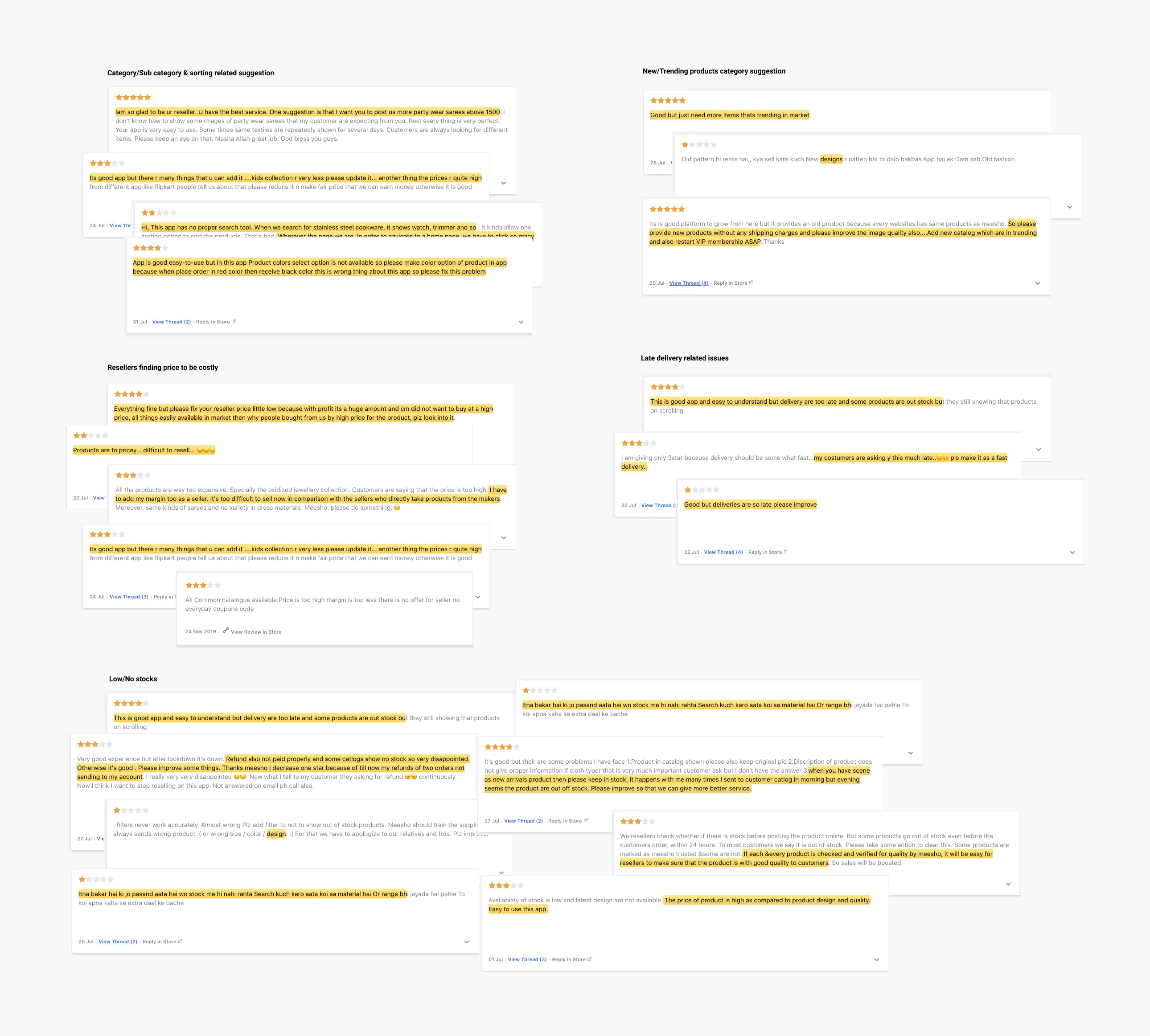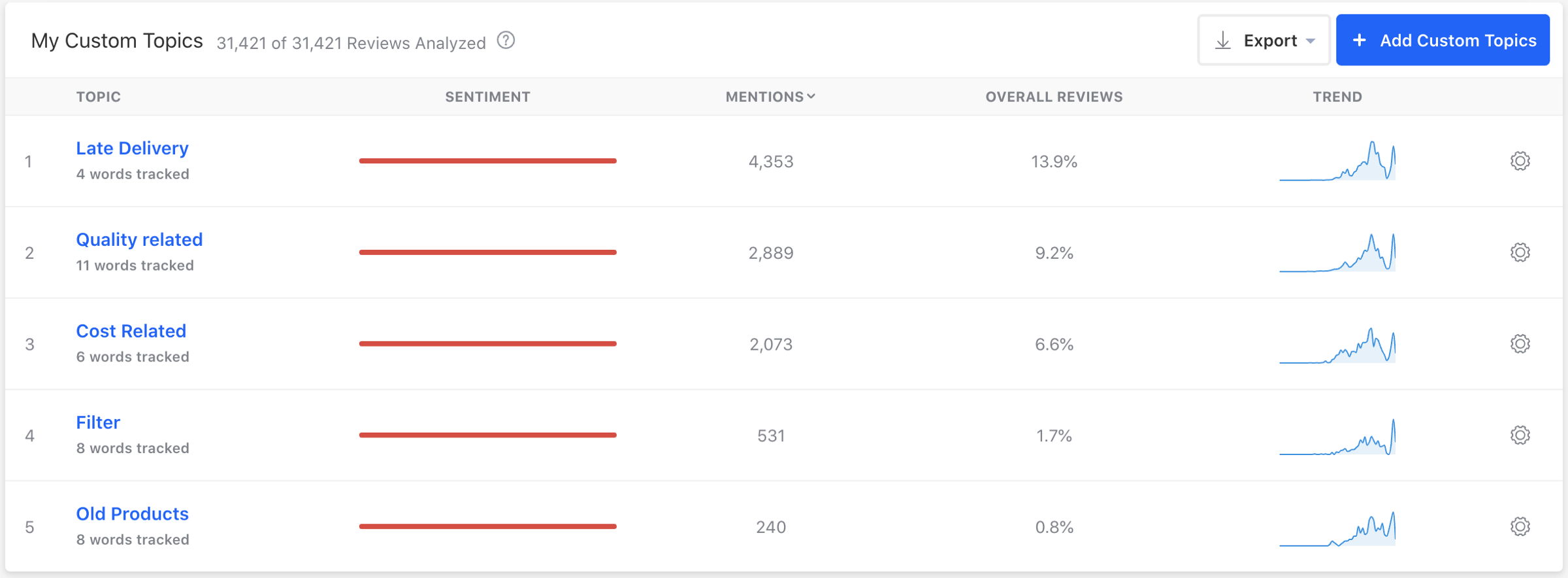Entity’s resellers are faced with increased difficulty about not knowing the products to sell/pitch to their customers confidently to make a sale when they are on the application. The solution is to deliver a way to make them feel confident about discovering, deciding, pitching a product to their customers with confidence.
Provide a suitable and actionable solution limited only to improving catalogue & product discovery for Resellers on Entity app.
Users in Tier 2,3,4 cities, who always wanted to do something on their own, particularly women who are home-makers.
It is assumed that the Reseller (hereby referred to as ‘user’) is aware and has used Entity app in some capacity or any of the app belonging to the same domain.
I looked into the methods applied by for some other popular Resellers platforms and applied techniques to improve their product discovery and generate impulse buying amongst Resellers.
It is used to gain an understanding of underlying reasons, opinions, and motivations. It provides insights into the problem to develop ideas for potential quantitative research. It is also used to uncover trends in thought and opinions, and dive deeper into the problem.
A series of personal interviews were conducted to understand user goals and pain points and to unearth any unexplored areas.
30+ users were interviewed, each having varying Reselling experience across Entity or any other apps in the same category. The idea of the questionnaire is to keep it open-ended and try to gather as many details as possible around Reselling service. The questionnaire is provided below:
1. How long have you been using Entity?
2. Why do you use Entity?
3. Have you tried out other apps or platforms?
4. If yes, how are they different?
5. Why do you use Entity instead of other platforms?
6. How frequent/often do you use the app, say in a week?
7. When do you usually use the app?
8. What do you like about the app?
9. What do you dislike about the app?
10. What do you usually do after you launch the app? Do you mind showing me how do you usually use the app?
11. What kind of products do you usually look for? Did you face any difficulty?
12. When is the last time you purchased a product on the app?
13. Do you research on the price of the product before buying it?
14. Is there anything that frustrates you when using Entity?
15. What are some of the things that Entity can improve on?
16. Describe Entity using 3 words.
1. I found out that most of the users were in a highly confused state as to which catalogue/products to share to their customers.
2. Resellers disclosed that it was easy for them to close deals for products which were latest, new in the market.
3. Reseller’s customers craved for new products from them in terms of the latest trends in the markets- which in turn led the Resellers to themselves put in efforts to research and figure out from other external sources about which products were trending.
4. Majority of the Resellers wanted some information about what all products/catalogues other Resellers are selling. They are feeling left out in their self taken micro-entrepreneurial path with no guide or helping hand in sight.
5. Each of the people I interviewed is critical about high product prices at the seller level, thereby leaving them with a very small margin to earn a sustainable profit in the long run.
6. Resellers were also found to be highly critical on the actual delivery timings too. Some products were delivered to their customers almost a month late- leaving their customers in a frustrated state of mind with high cancellation probability.
Key insights from Google Play Store Reviews:

Findings from several Google Play Store reviews re-iterates the key findings found during my user-interview phase- those being-
1. High prices. Costly.
2. Late delivery.
3. New category suggestion… trending… more sub-categories like product colour etc.
4. Sorting option
While doing this, I purposefully held off sending Surveys consisting of questionnaires. As the target group for Entity were mostly belonging from Tier 2, & 3 cities, they weren’t habituated to clicking on an online link to answer that many questions. Instead, they will be very comfortable to answer those if someone else asked them those questions over on-call/in-person (preferably in their native mother tongue).
Due to my time constraint, I chose to go for the App Review analytics route to do my quantitative research which will give a statistical data-backed view of the problem faced by reviews written by actual Entity users. It’ll quantify the problem by way of generating numerical data that can be transformed into usable statistics. It is also widely used to quantify attitudes, opinions, behaviours, and other defined variables- and generalising results from a larger sample population.
App Reviews Analysis:
Uses: * Detecting or prioritizing problems * Monitoring performance Cost: Low Type of Method: Behavioral (what users do) Context of Use: Live

Based on hearing to different stories and comments, I came up with a User Persona, I created the profiles, their mission statement, end goals and frustrations to better understand the user.
The empathy map was created to gain a deeper insight into the customer’s thinking, feelings, worries, and aspirations.
User Need / Point of View Statement:
Rima Chakraborty, a house-wife, mother of two kids and an upcoming micro-entrepreneur needs of quick and confident discover, sharethe products with her customers without much hassle in order to spend more time doing the things thatreally matter to her.
Next develop a customer journey map for Rima to map out her experience over time, identifying relevant touchpoints. This is a timeline of the activities the persona undertake with Entity.
After gathering data and understanding the requirements, a set of problems that are needed to consider while designing was formulated. This was done using the HMW (How might we) method in which each pain point is converted to a “How might we…” question. Further condensing & optimising these above HMW questions, we get-
1. How might we help users identify products to be shared amongst their customers?
2. How might we help the users act on insights about the products sold by other resellers?
3. How might we ensure resellers identify, share quality, reliable products that also fits in into their customer’s budget?
4. How might we ensure clear visibility of shared products being in stock?
5. How might we ensure dispatch and delivery dates being clearly communicated to the user and their customers?
Begin to open our mind and start ideating — generating a list of whacky, amazing, creative, and innovative ideas.
In this last step, went for convergent thinking again, focusing on what we can actually deliver and which solutions will solve the users’ needs. Decide on a better idea from the Creative Matrix framework. The green tick mark on the creative matrix is what I’ll be proceeding with for prototyping, testing & analysing.
Now that explored Desirability in an unconstrained way, now start converging on the right solution by plotting the selected ideas from the creative matrix framework on the impact/difficulty matrix and then deciding on which ones to pursue…
As seen from the above matrix, for the scope of this case study, due to time constraint, we will be focusing on solutions falling under Easy wins and High ROI quadrant. Saying which, very difficult and low impact problems aren’t necessarily a write off — these are luxuries that some users may be willing to pay a premium for.…
New & Imaginative Ideas. View things in new ways. Generate new possibilities and alternatives. Solution is guaranteed.
People talk a lot about and I do it, that make my Client feel proud. It makes the Brand easier to remember and for longer time.
It turns a very ordinary thing into more Attractive one. Kind of a magic it works like but not an illusion.